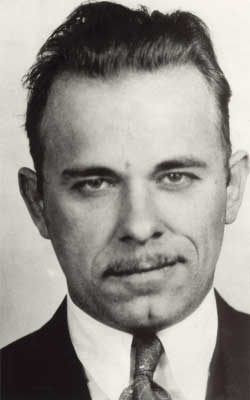Dillinger
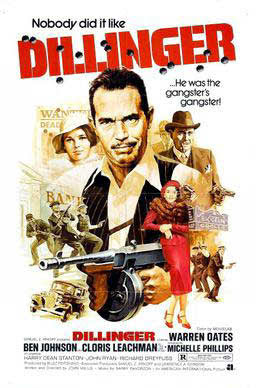
Director: John Milius
Year: 1973
Rating: 7.5
Of the many famous bank robbers
of the 1930s, Dillinger is the most legendary. There have been numerous films
about him or in which he makes an appearance. He was a folk hero at the time.
Banks were the villains back then (somethings never change) and Dillinger
was a freedom fighter. It was the Depression and banks were kicking people
out of their homes, taking away land that had been farmed by families for
generations, losing people's savings - and part of the public was happy to
see them getting robbed. Dillinger did his share of it - known to have robbed
about 34 banks. He lived the criminal life and enjoyed every minute of it.
He escaped from lots of shoot-outs and even jail when he carved a piece of
soap into looking like a gun. He was number one on the FBI's Most Wanted list
and he took pride in that. Only a woman's betrayal could bring him down.
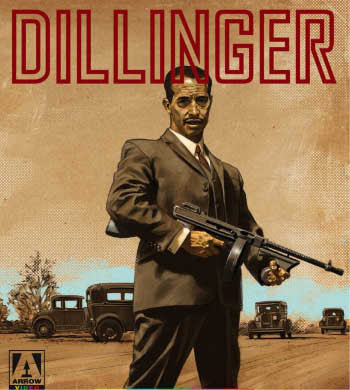
Warren Oates plays him as a charming, roguish
rascal with a bent for publicity. At his bank robberies he would announce
to the people being held at gun point who he was and that they should be grateful
because this would be the most exciting day of their lives. Something they
could tell their grandchildren about. If he was living today, he would be
taking selfies in the bank and posting them on Twitter with the hashtag "Get
me if you can". You can't help but like the guy a bit even if he is
a psychopath. And everyone knows how it will end.
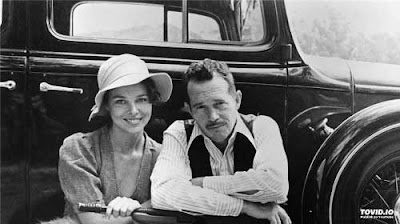
This was the directing debut of John Milius.
He had written two well-received scripts - Jeremiah Johnson and The Life and
Times of Judge Roy Bean - and went to AIP to ask them to let him direct and
he would write the script for free. They gave him a choice of Dillinger or
Pretty Boy Floyd and he said Dillinger. Milius appreciated testosterone in
his male characters - Conan, Magnum Force, Red Dawn, Apocalypse Now - and
Dillinger was nothing but testosterone. This is everything one of these bank
robbing gangster films should be. Frenetic, violent, personable, myth-making
but with the occasional stop off for beautifully shot lyrical rural scenes
of Americana. The wheat high in the fields, the sun shining down, the farmhouses
set in isolation. His depiction of mid-west 1930's America feels nostalgic
and real. A few of the gunfights are beautifully staged - visceral,
violent ala Bonnie and Clyde - with thousands of bullets being exchanged and
blood spilled.
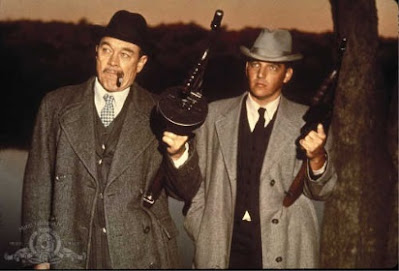
He wanted Oates for the role and Oates
is terrific, never flatlining - always in full gear for his character - full
of bravado and charisma. Milius fills the rest of the roster with excellent
character actors - Ben Johnson as Melvin Purvis, Harry Dean Stanton as a gang
member, Geoffrey Lewis as a gang member, Richard Dreyfuss as Baby Face Nelson
(still a character actor for another two years until Jaws), Cloris Leachman
as The Lady in Red and in her debut Michelle Phillips (The Mamas and Papas)
as Dillinger's girlfriend. The film swerves back and forth between Dillinger
robbing and Purvis chasing him and the other members of his gang. Purvis
slowly guns them down one after another and begins to close in on Dillinger.
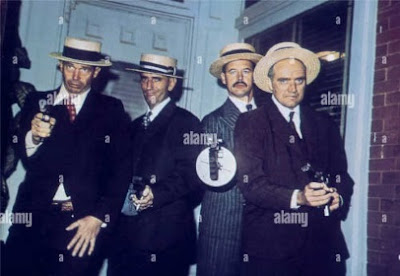
The details are all wrong - the timeline
off (Dillinger was killed before Pretty Boy Floyd and Baby Face Nelson), Purvis
is given credit for killing some of them that he had nothing to do with -
but this is a film and his personal killing of these guys, up close and personal
for the Kansas City Massacre has a rhythm and rhyme to it. He is nearly the
yin of Dillinger's yang - both killers but one can do it legally. It is a
dance of death as he tracks them down and blows them away. And lights a cigar.
Make sure you get the 107-minute version.
There is a 90-minute version floating around that cuts out the two best shoot-outs.
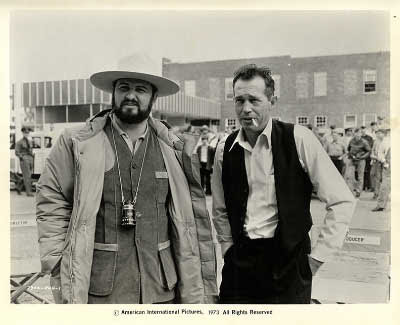 John Milius and Warren
Oates
John Milius and Warren
Oates







